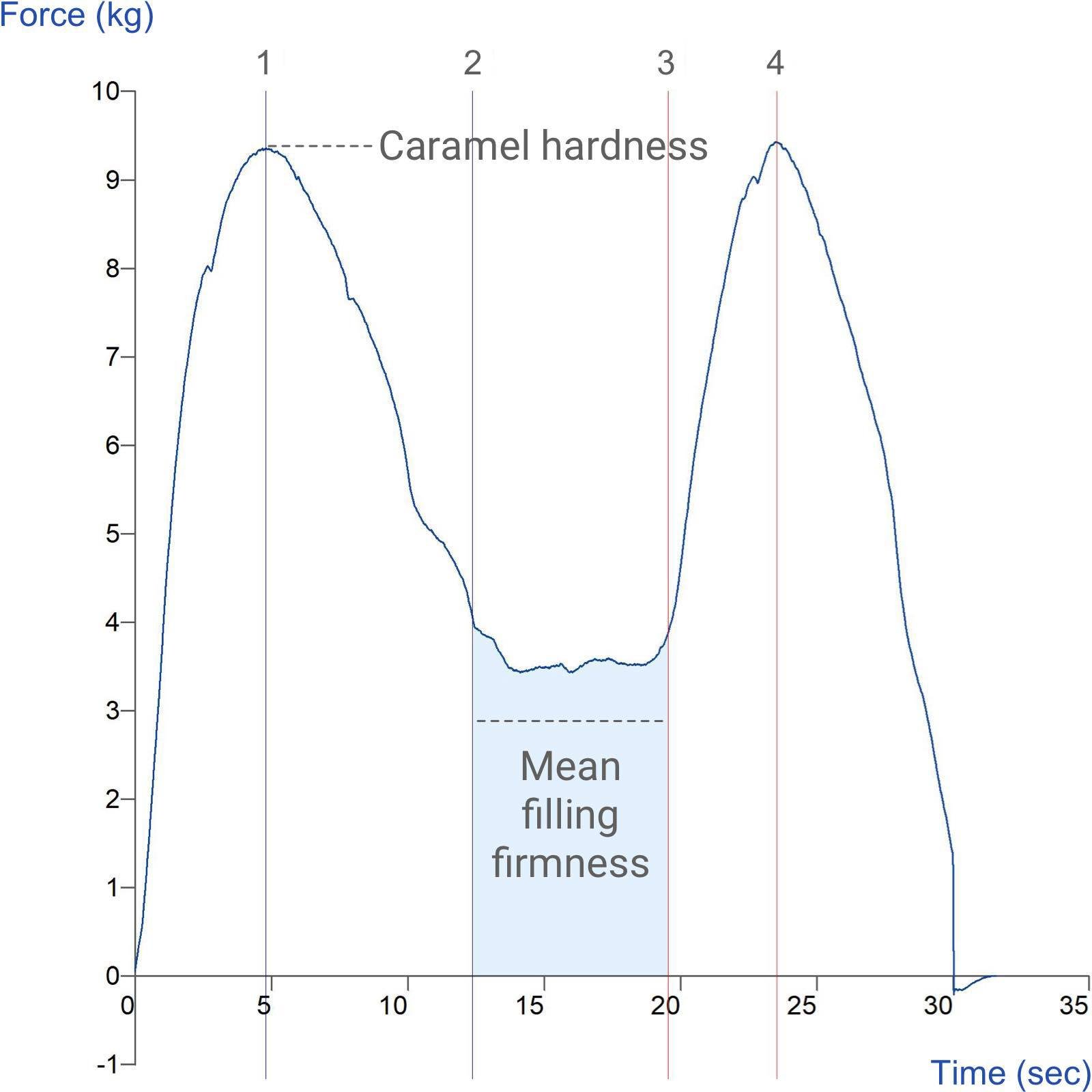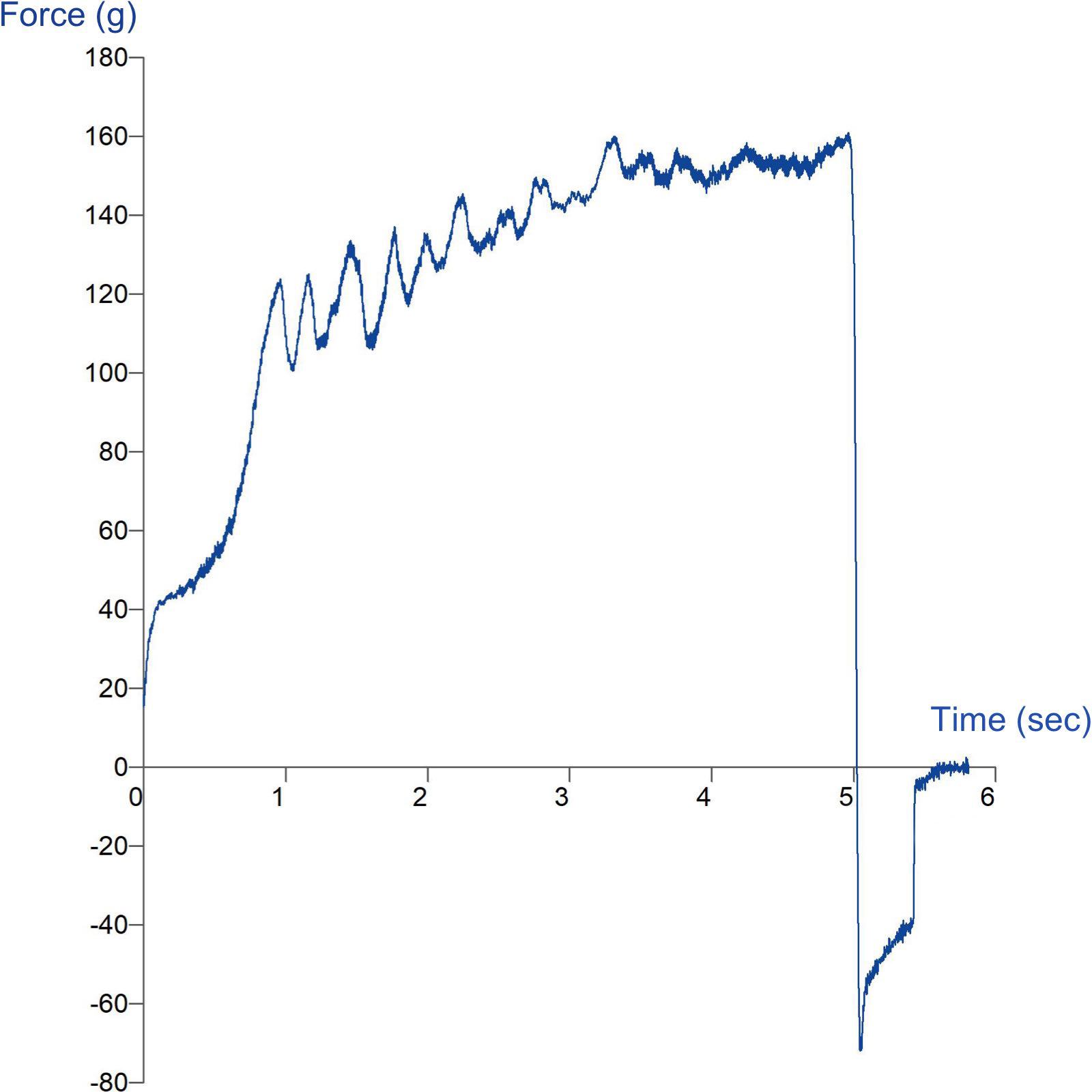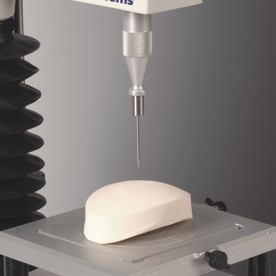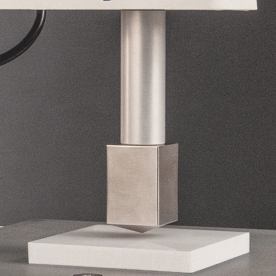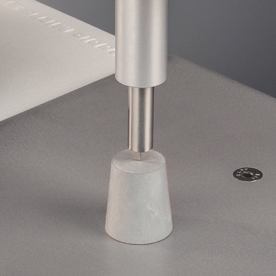Puncture and penetration testing
Learn about penetration testing, when to use this test type and the typical probes and attachments for use on a Texture Analyser.




What is a penetration / puncture test?
A penetration or puncture test is a method used to evaluate the resistance of a material when a probe is driven into it. During the test, the Texture Analyser records the relationship between force and displacement over time, producing an objective measure of properties such as hardness, gel strength, toughness, or actuation force. Because the probe physically ruptures or deforms the sample, penetration tests are considered destructive and irreversible. They also rely on the assumption that the sample area is larger than the probe’s contact area. In some cases, particularly when dealing with very hard products, penetration testing may be the only feasible option if the instrument’s force capacity is limited.
How a Texture Analyser performs a puncture / penetration test
To carry out a puncture or penetration test, the Texture Analyser positions a probe above the sample and drives it downward at a controlled speed. As the probe enters the material, the instrument continuously records the force applied relative to the distance travelled or the time elapsed. Once the probe reaches a specified depth or the sample ruptures, the Texture Analyser identifies the maximum force or the force at that depth. These values are then translated into meaningful performance indicators, such as hardness, gel strength, toughness, or actuation force, providing researchers and product developers with precise data about the material’s behaviour under stress.
Typical graph produced and properties measured
Puncture and penetration tests are commonly used to quantify firmness, gel strength, dipping consistency, product toughness, fracture force, cake breaking strength, semi-solid consistency, and actuation force.
Single or multiple parameters such as peak force, penetration depth, work to penetrate and slope/modulus can be collected from the graph. These parameters help characterise how easily a material yields or fractures under applied force, making this test ideal for products such as gels, creams, tablets, films, and food samples.
To learn more about how these properties are measured, visit our Textural properties page.
Choosing a probe / attachment for sample measurement
Probe types
- Cylindrical probes (typically 2-10 mm diameter) – general-purpose; small diameters for rupture/skin testing and more detailed measurement of multiple structures within a sample.
- Conical probes – used to assess the firmness, consistency, and flow behaviour of soft or semi-solid materials such as gels, creams, pastes, and is often chosen to replace tests previously performed on a penetrometer for the testing of waxes and spreads. Its tapered design allows for gradual penetration, meaning the contact area increases smoothly with depth which can make data interpretation more difficult.
- Needle probes – for fruit flesh/skins and fine measurement of multiple structures within a sample.
- Spherical / hemispherical probes – where surface curvature or imitation of a finger is needed (actuation).
Multiple-penetration rigs
Use multiple-probe rigs where product variability is high (fruits, mixed matrices) to increase repeatability; they allow simultaneous multiple sampling across a single sample.
Materials and bespoke probes
Standard probes come in Delrin, stainless steel or aluminium. Bespoke geometries or materials can be produced to customer specification for specialised tests.
When to choose penetration vs compression
- Penetration: Use when you need to rupture a sample to mimic it being punctured by a small item, or the sample is thin, non-self-supporting, has a skin/crust or you must mimic a probe/actuation. Penetration is a suitable test choice when samples cannot be prepared to the same dimensions as the use of a probe smaller than the sample provides a consistent contact area. A penetration test is also a way of reducing the force measured when a higher Load Cell is not available for testing, by way of its reduced probe/sample contact area. Typical examples: apple firmness, Bloom gel strength, packaging puncture, cosmetic wax firmness.
- Compression: Use when measuring bulk deformation without penetration (e.g. whole biscuits compressed between platens) or a number of test pieces to overcome between piece variability. If the sample area ≤ probe contact area, compression principles apply. When choosing to perform a compression test of a single piece the sample dimensions must be carefully controlled to avoid the production of variability by changing sample size.
Use cases by industry
|
Industry |
Example applications |
Typical probe / attachment |
|
Food |
Apple firmness for harvest timing; Bloom gel strength for gelatine classification; spreadability/penetration for margarines |
Small Cylinder Probe or Bloom probe; Conical Probe or Needle Probe |
|
Cosmetics |
Stick firmness for lipstick; actuation force for dispensers |
Needle probe; Small Cylinder Probes; Hemispherical Probe |
|
Adhesives |
Initial tack / puncture to evaluate adhesive grab or film failure |
Spherical Probe or Small Cylinder Probe |
|
Packaging |
Puncture resistance of film and pouches; closure actuation forces |
Small Cylinder Probe; Compression platen or Needle Probe |
|
Pharmaceutical |
Puncture of softgel capsules; actuation forces on delivery devices |
Needle Probe or Small-diameter Cylinder Probe; Hemispherical Probe |
Example standard methods using a penetration test
- Bloom test – according to ISO, BS and GMIA standard methods using a 0.5” cylinder probe.
- Bakery products – there are a number of AIB standard methods that use penetration tests to measure various firmness/staleness properties of e.g. bagels, cake.
- Lipstick and waxes – ASTM Standard method D 1321-95 and ASTM Standard method D937-92 for the measurement of hardness using a 2mm needle probe and conical probe, respectively.
- Pharmaceutical – a few of the ISO standard methods for syringe testing use the principle of penetration testing.
- There are several ASTM, BS and ISO methods for the puncture resistance measurement of paperboard, films and packaging materials.
What else do I need to perform a puncture / penetration test?




Probe Adapters
Probe adapters securely mount and align probes on the Texture Analyser. Magnetic and quick-twist options allow quick, repeatable changeovers, boosting throughput when swapping different probes or running multiple tests.

Heavy Duty Platform
Flat, stable base with sample centralisation concentric rings which also raises the sample test area away from the base of the instrument which may become warm over time and will affect temperature dependent samples.

Calibrated Load Cell
Ensure measurement within correct force range.

Temperature control
For the testing of temperature sensitive samples.

Guard
Protect operators when working with samples that may shatter.

Shatter Screen
Protect operators when working with samples that may shatter.
More examples of how a Texture Analyser performs penetration tests
People also ask
What probe should I use for a penetration test?
Choose probe geometry to match the failure mode: small cylinders (2-5 mm) for rupture/skin testing, needles for thin skins or fruit, conical/sharp probes for packaging puncture, and hemispherical probes to mimic a finger for actuation. Material typically stainless steel, aluminium or Delrin; bespoke probes can be made for special requirements.
How is Bloom gel strength measured?
Bloom gel strength uses a 0.5-inch (12.7 mm) plunger to depress a standard gelatin gel 4 mm at a controlled temperature; the force (grams) recorded is the Bloom value. Preparing gels per method (6.67% solution, set at 10 °C) is essential for comparability.
When is a conical probe not the ideal testing choice
Despite its advantages, a conical probe isn’t always the best choice:
- Difficult comparison: Results can be harder to interpret or compare to other probe types because the contact area continually changes during the test.
- Non-uniform stress: The sloped surface produces both compression and shear, which can complicate analysis when pure compression data is needed.
- Not suitable for brittle materials: Hard or fragile samples (like tablets or crisp foods) may crack prematurely or unpredictably under a cone.
- Limited surface contact: At shallow penetration depths, only a small part of the probe contacts the sample, which may reduce sensitivity for very soft materials.
Conical probes are excellent for semi-solid, deformable materials where gradual flow behaviour is important, but less suitable when you need direct compression data, fracture testing, or highly comparable firmness results across samples.
What outputs should I report from a puncture test?
Report the probe type, speed, trigger force, temperature, number of replicates, and numeric outputs: peak force (N), penetration at set force or depth (mm), work to penetrate (N·mm), and any curve features (multiple peaks). Include mean ± SD.
How many replicates do I need?
It depends on product variability. For relatively homogeneous gels 4-6 replicates may suffice; for heterogeneous foods (fruit, mixed products) 8-12 replicates improve confidence.

